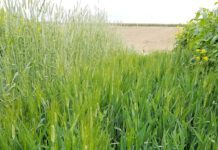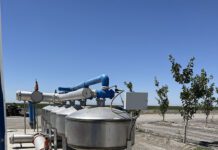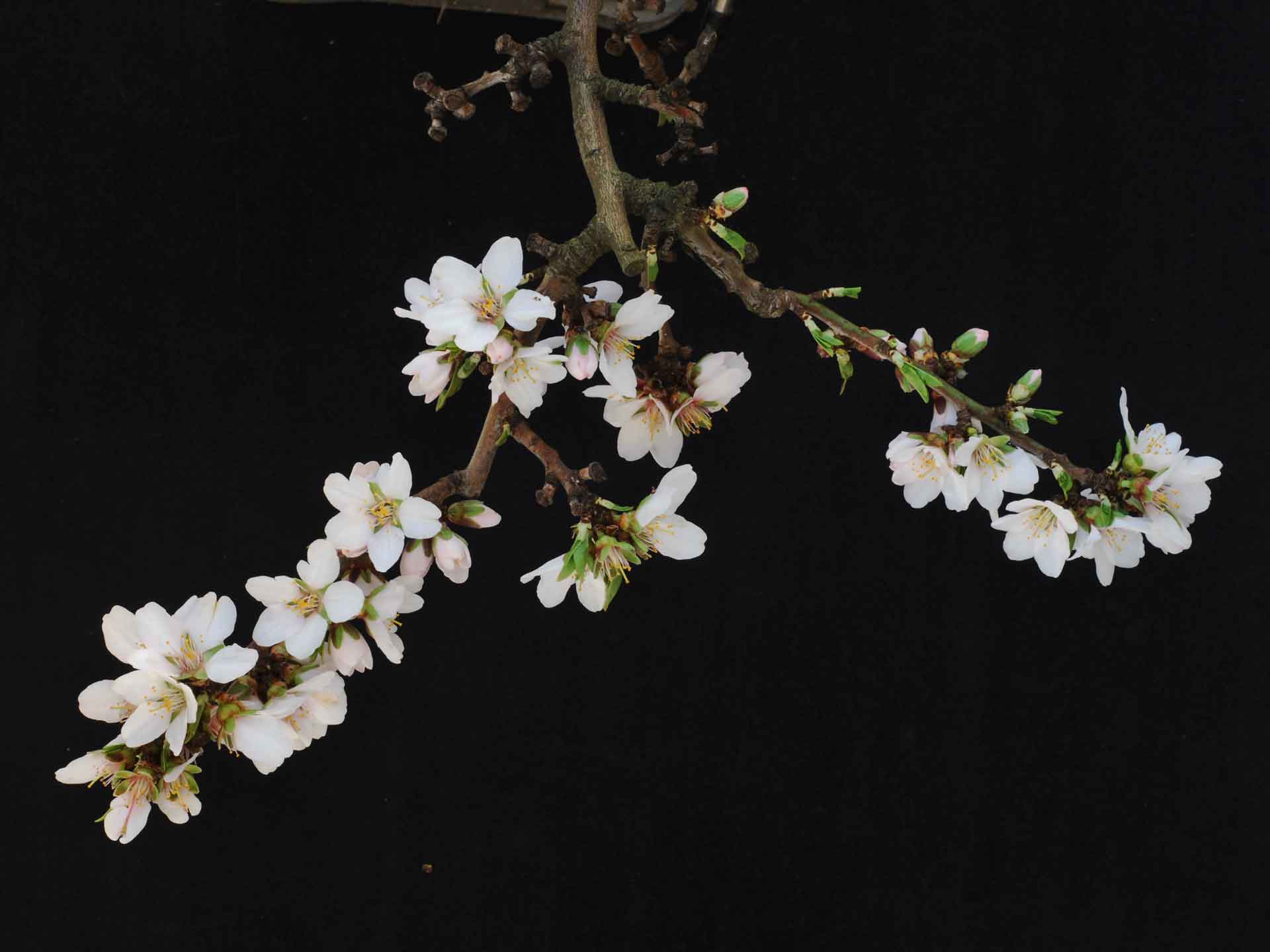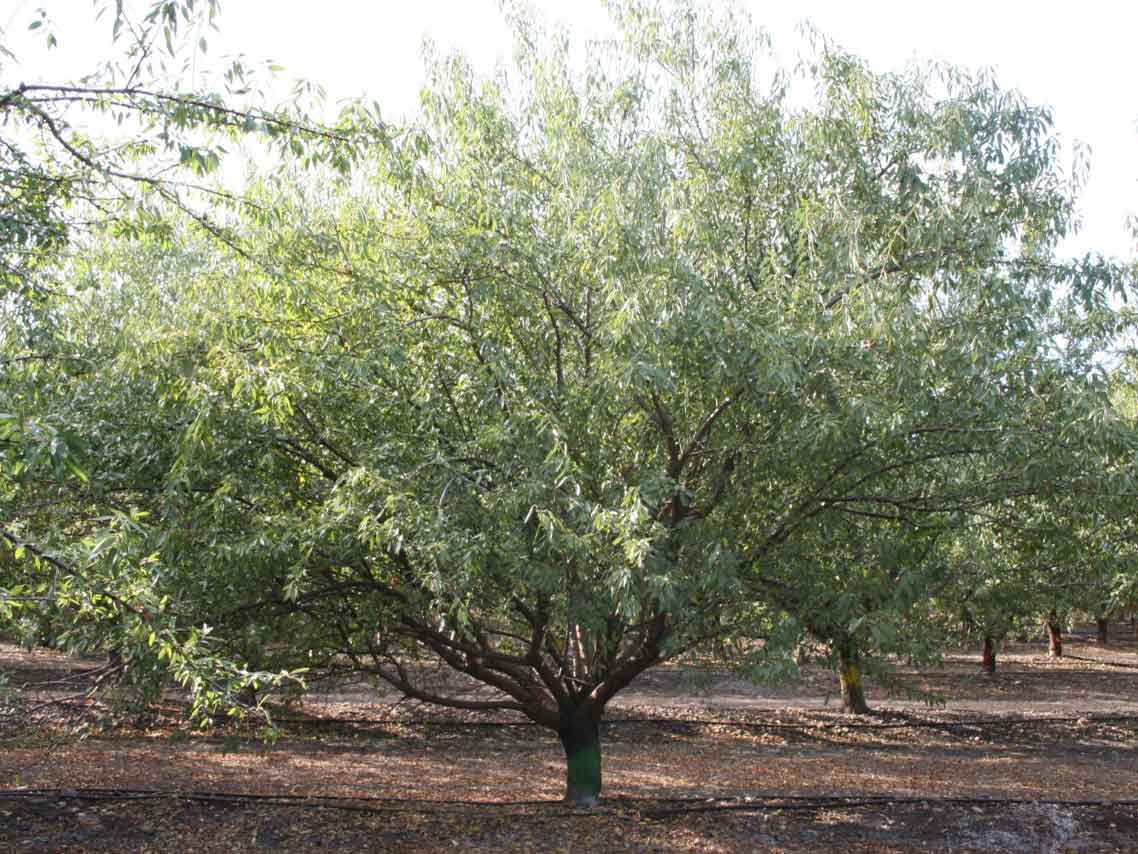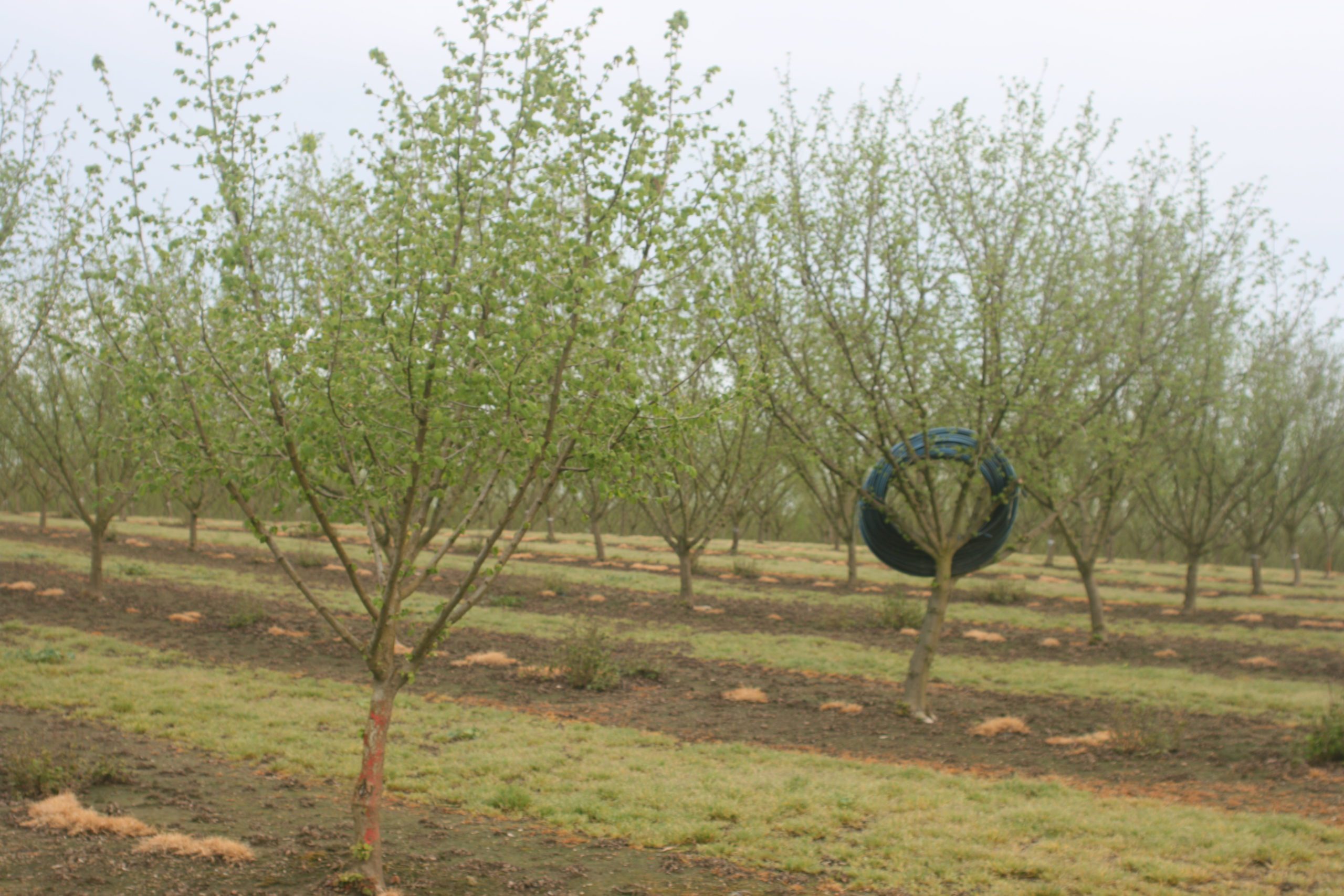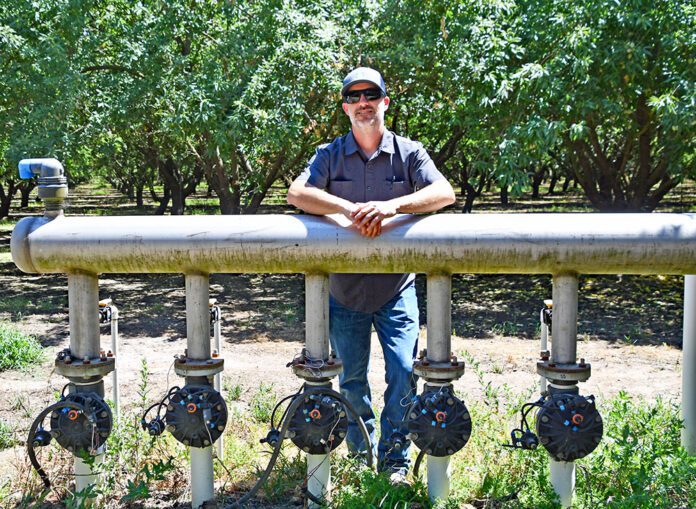
Listen to the audio version of this article. (Generated by A.I.)
Devin Clarke is taking the 4Rs of nutrient management to the next level at a farm-scale almond trial west of Modesto. As agronomy solutions manager for Yara North America, he is exploring four different nitrogen fertigation regimes including one he called “continuous fertigation.”
Not only is the project looking at making more efficient use of nutrients, it also wants to do so with grower profits top of mind.
“We’re working with a commercial team to do a full market assessment and move science forward into the industry to produce the best outcome for the grower,” Clarke said.
In 2024, Yara teamed with retail partners and almond growers in San Joaquin, Stanislaus and Merced counties to test continuous fertigation.
“We’re working on commercializing this and trying to understand what the industry roadblocks are and break down the barriers,” he said.
Bill Brush, an agronomist and almond grower who leased 40 acres of young almond trees to Yara for the trial, is passionate about increasing nutrient-use efficiency among a host of crops. At the same time, he looks to improve microbial communities within the soil.
Those goals are paramount if agriculture wants to continue since no new farmland is being created, Brush said.
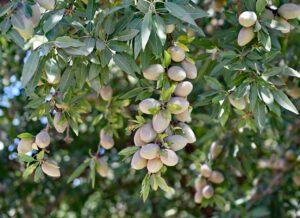
“If we’re going to keep farming in this valley, we need to get our production to sustainable levels,” he said. “What’s going to get us there is we’re going to help you get better yields with better fertilizer efficiency.”
But they aren’t the only ones looking at N-use efficiency. A group of UC researchers led by Thomas Harter, a Cooperative Extension specialist in the Department of Land, Air and Water Resources at UC Davis, is examining high-frequency low-concentration N applications. Their goal is to reduce the amount of N that leaches below the root zone into groundwater or leaves the orchards in surface water.
In an orchard west of Modesto, the researchers are conducting a trial that compares three different monitoring approaches to assess N’s impact on groundwater. Ultimately they hope to develop a grower tool to improve N-use efficiency and minimize nitrate leaching while maintaining yields.
Four seasons into the Yara trial, Clarke said continuous fertigation, where trees receive N with each irrigation based on tree nutrient demand, has improved yields and N-use efficiency compared to a grower standard practice. That’s not to say that continuous feed reduces overall N because it typically doesn’t.
With advanced nutrition management strategies come increased yield, he said. And with increased yield comes increased nutrient demand documented as removal.
The continuous fertigation strategy is no exception to this rule. But with enhanced efficiency he said they applied fewer pounds of N per pound of yield generated.
“We’re converting more N to yield and less to waste streams,” Clarke said.
The continuous fertigation program also has improved water-use efficiency by about 15%, he said. Both results are important to help the California almond industry meet its sustainability goals that target increased water-use efficiency and a reduced carbon footprint.
From a grower’s standpoint he said the continuous feed program increased net profitability by 15% over the baseline program during the four-year trial.
Brush fully embraced conducting field-scale trials like the one west of Modesto because they consider variability within the field as well as among plants. Along the same line, he said looking at issues over several years is necessary, especially with permanent crops.
The Modesto-area trial is built around the 4Rs of N management: applying the right fertilizer source at the right rate at the right time and in the right place. The mature 40-acre orchard is Nonpareil with Supareil as the pollinizer.
As part of the arrangement, Clarke and the Yara team are responsible for fertility management while Brush takes care of all the other cultural practices.
Each of the four N treatments was applied to two rows of trees then repeated for a total of six reps.
The baseline was four applications of UAN (urea ammonium nitrate), and all the potassium was applied as a spring broadcast of SOP (sulfate of potash).
The continuous fertigation program received half of its K needs with a spring SOP broadcast and half as an in-season fertigation with potassium nitrate. A portion of the N was applied as ammonium sulfate with the SOP followed by calcium nitrate fed weekly from 70% leaf-out until harvest.
Nitrate N was key to the continuous fertigation strategy because it provided the most predictable uptake when trying to meet incremental crop demand on a weekly basis, Clarke said. He also noted that automated application technology was essential to efficiently manage these types of application strategies.
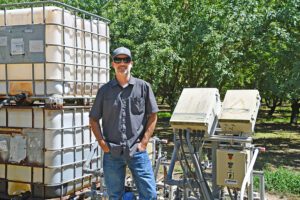
Mimicking Mother Nature
When they calculated the N quantities for continuous feed, Clarke said they didn’t simply take the typical four per season and split them evenly into 15 to 20 treatments. Instead they tried to feed the crop to match N demand throughout the season.
Clarke cited previous work conducted by UC Davis plant science professor Patrick Brown who developed a season-long N demand curve for mature almond trees. What Brown found was nutrient demand was driven by yield, which varies among orchards and years.
A mature almond orchard removes an average of 68 pounds of N plus or minus 3 pounds per 1,000 pounds of kernels. That doesn’t count the N in hulls and shells.
Brown also found that N demand ramps up during the season with only about 20% required from bloom to fruit set. The largest demand occurs during fruit enlargement to kernel fill when the trees use about 60% of the season’s N.
“We’re actually fertigating from 70% leaf-out all the way to the last irrigation before harvest, and that’s very different from what’s been done in the industry,” Clarke said.
Growers using a typical fertigation program stop N applications by the end of May or the first week of June to reduce hull rot and increase nut removal during shaking. Clarke said that’s because they’ve been overapplying N earlier in the season and have to wean trees off the excess nutrient, a process that takes several weeks.
By providing the tree with just the amount of N it needs with each irrigation, he said they’ve been able to reduce hull rot by about 24%. They also haven’t had problems with stick-tights and have experienced uniform nut maturity.
While many growers may apply about 20% of the season’s N postharvest to make up for a previous deficit, Clarke said they don’t because they’ve kept the tank topped off during the season.
He described their efforts as less of a program and more of a framework because it provides flexibility and enables them to make in-season changes based on regular tissue sampling results.
“When you have this many opportunities to feed, you have that many opportunities to make fine-tune adjustments to the crop,” Clarke said. “You have more opportunities to make small corrections and really hone in on that demand.”

Vicky Boyd | Contributing Writer
A veteran agricultural journalist, Vicky Boyd has covered the industry in California, Florida, Texas, Colorado, the South and the Mid-South. Along the way, she has won several writing awards. Boyd attended Colorado State University, where she earned a technical journalism degree with minors in agriculture and natural resources. Boyd is known for taking complex technical or scientific material and translating it so readers can use it on their farms. Her favorite topics are entomology, weeds and new technology. When she’s not out “playing in the dirt,” as she calls agricultural reporting, Boyd enjoys running, hiking, knitting and sewing.








